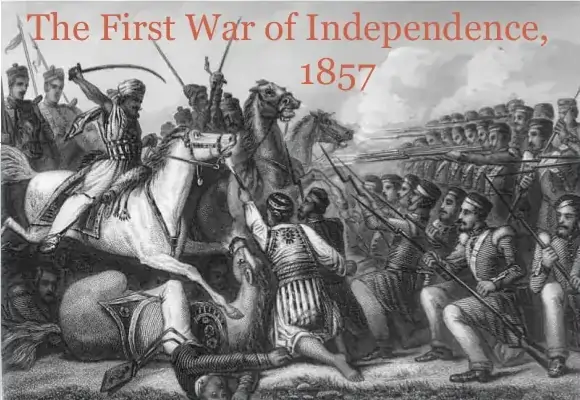Stuck studying for the ICSE Class 10 History & Civics exam? Get a FREE downloadable PDF solution with chapter-by-chapter explanations, solved practice questions. Ace your homework!
Section A: History
The First War of Independence, 1857

Causes:
- Political: Annexation of princely states, Doctrine of Lapse, interference in traditional practices.
- Economic: Exploitation of resources, high taxes, discriminatory practices.
- Social: Introduction of new laws like Sati abolition, interference in religious customs, perceived disrespect towards traditions.
- Military: Greased cartridge issue, discrimination against sepoys, harsh disciplinary measures.
Key Events:
- May 10, 1857: Sepoy Mangal Pandey revolts in Meerut, sparking the rebellion.
- Delhi captured: Bahadur Shah Zafar proclaimed Emperor, uniting rebel forces.
- Jhansi: Rani Lakshmibai emerges as a prominent leader, fiercely resisting the British.
- Lucknow: Awadh sepoys and civilians fight bravely under Begum Hazrat Mahal.
- Kanpur: Brutal massacre of surrendered sepoys and civilians by British forces.
Outcome:
- British regain control by 1858, using superior military strength and divide-and-rule tactics.
- Thousands of Indians executed, many leaders exiled or killed.
- End of East India Company rule, direct British Crown control established.
Significance:
- First large-scale armed rebellion against British rule in India.
- Showed unity against colonialism, inspiring future freedom movements.
- Led to major administrative changes in British policy.
- Marked a turning point in India’s struggle for independence.
Important Figures:
- Mangal Pandey: Sepoy who sparked the rebellion.
- Bahadur Shah Zafar: Mughal Emperor who joined the revolt.
- Rani Lakshmibai: Queen of Jhansi, known for her valor.
- Begum Hazrat Mahal: Leader of the Awadh rebellion.
- Nana Saheb: Leader of the Kanpur revolt.
- Understand the causes, events, and consequences of the uprising.
- Analyze its impact on the freedom struggle.
Growth of Nationalism
- Explore the rise of national consciousness in India.
- Examine the role of individuals, organizations, and events.
First Phase of the Indian National Movement
- Trace the early initiatives and movements.
- Lay the foundation for the freedom struggle.
Second Phase of the Indian National Movement
- Analyze the emergence of Gandhian methods.
- Examine the evolving strategies of the movement.
The Muslim League
- Understand the formation, objectives, and role in the context of partition.
Mahatma Gandhi and the National Movement
- Analyze Gandhi’s philosophy, leadership, and impact.
Quit India Movement
- Study the reasons, events, and consequences.
Forward Bloc and The INA
- Explore the ideologies and contributions to the freedom struggle.
Independence and Partition of India
- Understand the events leading to independence and partition process.
The First World War
Analyze the causes, major events, and impact on India and the world.
Rise of Dictatorships
Study the rise of fascist and totalitarian regimes in Europe and their global impact.
The Second World War
Understand the causes, major events, and consequences, focusing on India’s involvement.
United Nations
Analyze the formation, structure, and objectives of the UN.
Major Agencies of the United Nations
Study key UN agencies, functions, and contributions.
Non-Aligned Movement
Understand its history, principles, and role in the Cold War era and beyond.
Section B: Civics
The Union Parliament
- Delve into the structure, composition, and functioning.
- Understand the roles of Lok Sabha and Rajya Sabha.
The President and the Vice-President
- Understand their powers, functions, and limitations.
Prime Minister and Council of Ministers
- Analyze their role and responsibilities in the Indian government.
The Supreme Court
- Study its composition, powers, and functions.
The High Courts and Subordinate Courts
- Understand the structure and hierarchy of the Indian judiciary.

Leave a Reply